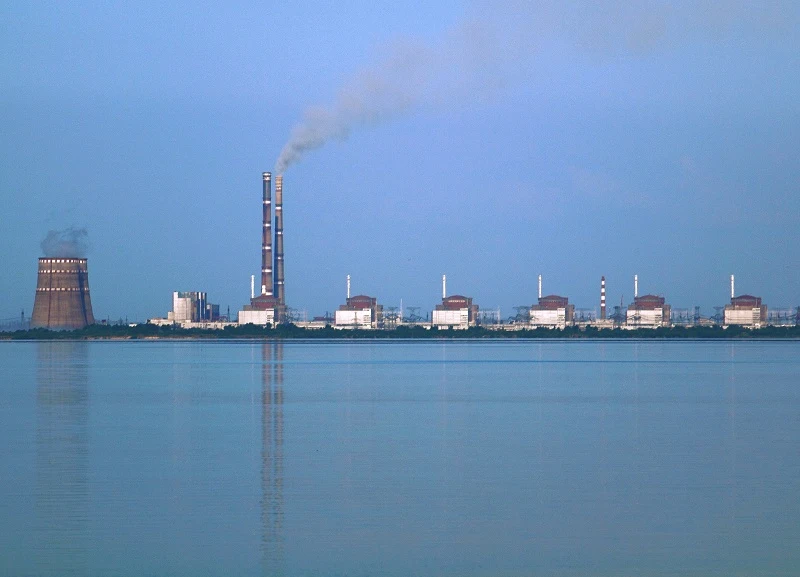The International Atomic Energy Agency (IAEA) has once again warned that the situation at the Russian-controlled Zaporizhzhya Nuclear Power Plant (ZNPP) in Ukraine underscores the urgent need to establish a nuclear safety and security protection zone at the site.
In his introductory remarks to the quarterly session of the 35-member IAEA Board on Monday, Director General Rafael Mariano Grossi spotlighted the “precarious nuclear safety and security situation” at Europe’s largest nuclear power plant once again.
“Our team at the plant has reported increases in military action near the facility. There is open discussion about offensives and counter offensives in the vicinity of the site. My simple question is: are we waiting for a nuclear emergency before we react?” questioned Grossi.
The IAEA Support and Assistance Mission to Zaporizhzhya (ISAMZ) has been conducting vital nuclear safety and security activities since it was established on September 1, last year.
On Monday, three IAEA experts crossed the frontline into Russian-held territory in southern Ukraine during a long-delayed rotation, sixth since ISAMZ was formed six months ago, at the ZNPP.
The @iaeaorg expert team is crossing the front line & when necessary, even by foot. The ISAMZ rotation at Zaporizhzhya #NPP is now completed. I am incredibly proud of the professionalism of our staff. Very thankful to the @UN for their support. The IAEA will not stop. pic.twitter.com/uMfNA39JQb
— Rafael MarianoGrossi (@rafaelmgrossi) March 2, 2023
Grossi commented that there has been an “increasing security presence” at the site with the ongoing military operations and the stressful working conditions at Zaporizhzhya caused by the war, continuing to compromise the seven pillars of nuclear safety and security at the plant.
The ISAMZ team reported that on Sunday, the ZNPP’s only remaining 330 kilovolts (kV) backup power line was disconnected for a third time in less than a week, likely because of shelling on the other side of the Dnipro river.
Over the past few months, Ukraine’s all five nuclear power plants have lost off-site power simultaneously.
IAEA, the nuclear watchdog of the United Nations, believes that the permanent presence of its experts at the ZNPP is “indispensable” to help reduce the risk of a nuclear accident during the already so devastating war.
In January, the agency – after receiving a request from Ukrainian President Volodymyr Zelenskyy – expanded the deployment of IAEA nuclear safety and security experts to all five Ukrainian nuclear power plant sites.
Ukraine’s civil nuclear fleet consists of four operational electrical generation nuclear power plants – Khmelnytskyy (KNPP), Rivne (RNPP), South Ukraine (SUNPP) and Zaporizhzhya (ZNPP). The Chornobyl NPP consists of six reactor units, four of which have been permanently shut down since the accident in 1986 and the remaining two were never commissioned.
At the start of its ‘Special Military Operation’ on February 24 last year, the Russian forces had taken control of all facilities of the Chornobyl site before withdrawing on March 31, 2022.
Even though IAEA says it working tirelessly to end the impasse, both Russia and Ukraine have indicated that there could be no end in sight to the present imbroglio.
Moscow continues to state that while it has completed its part of the work on the creation of a zone of protection of nuclear and physical nuclear safety at Zaporizhzhya, the Ukrainian side “has not yet bothered” to present a coherent reaction and is clearly leading to an endless delay in the process.
In September the #IAEA Director General put forward the initiative regarding nuclear safety and protection zone at the #ZNPP. This proposal (which would rule out attacks from and against the plant) hasn’t yet materialised. Regrettably Ukraine is not ready for that.
— Mikhail Ulyanov (@Amb_Ulyanov) March 4, 2023
“The SVR (the Russian Foreign Intelligence Service) said that the Ukrainian armed forces were storing weapons and ammunition provided by the West on the territories of nuclear power plants, while the IAEA claims that they did not find any,” Mikhail Ulyanov, Permanent Representative of the Russian Federation to International Organisations in Vienna, told Tass news agency in an interview.
Ukraine too has not shown a great deal of optimism on the steps being taken to secure the ZNPP.
“Currently, the situation has reached a dead end,” said Ukrainian Minister of Energy Herman Galushchenko during a telethon on Sunday.
Negotiations on returning #Zaporizhzhya nuclear power plant to Ukrainian control have reached a deadlock, Energy Minister Herman Galushchenko said.#Ukraine‘s position is based on the demilitarization of the plant, the complete withdrawal of Russian troops and representatives of… https://t.co/Fnmeoi3NLe
— Łukasz Bugajski (@bugajski_lukasz) March 5, 2023
The IAEA, meanwhile, has pledged to ride out the storm of continuous threat to the safety nuclear of nuclear facilities in Ukraine, asserting that it has “intensified” consultations with both parties.
“We can confirm that nuclear material under safeguards remains in peaceful activities and that safeguarded facilities are not being used for undeclared production or processing of nuclear material,” said Grossi.
Also Read: Ukraine nuclear plant shelled again despite bid for Moscow-Kyiv patch up




















